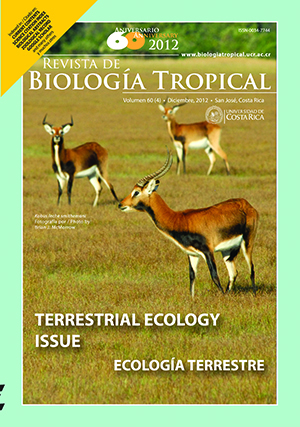Abstract
Germinating requirements of common vines from Chaco Serrano of Córdoba, Argentina. Vines are conspicuous elements of floras in different ecosystems. Patterns of distribution and ecology of this group has been studied at regional scales, mainly in tropical areas, but less is known about factors affecting their distribution at smaller scales. In this study, the germinating requirements of common vines from two plant communities (open shrubland and woodland) in xerophytic mountain forests (Chaco serrano) were studied. A total of 21 species were selected and classified as typical of woodland, shrubland, or indifferent. Experimental treatments were three temperature regimes (15-5oC, 25-15oC and 35-20oC), in light (12-12h daily photoperiod) and in continuous darkness. Total germination percentage, the relative light germination (RLG) and germina- tion rate (T50) were recorded. Among results we found that the temperature was the main factor triggering the germination process. No differences in the mean RLG and T50 between woodland and shrubland patches were found. The patterns observed in this work support the idea that, independently of patch type, germination is associated with temperature of the time of the year when most of the rainfall occurs. Germination of the studied species would be responding to macroclimate’s factors (seasonality of climate and rainfall), rather than to a microclimate. This indicates that differences in species composition between patches would not be due to the factors studied, rather than to characteristics of the later stages of the cycle life.##plugins.facebook.comentarios##
Downloads
Download data is not yet available.


